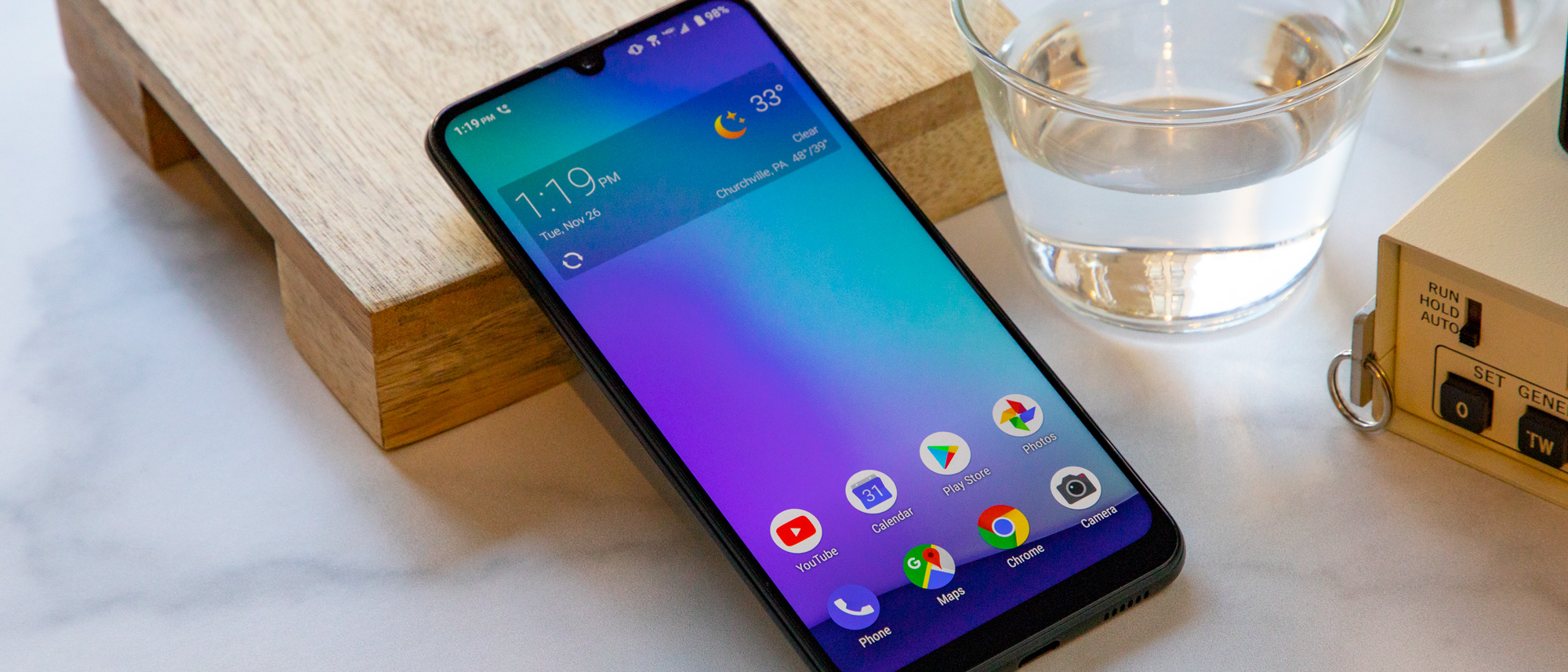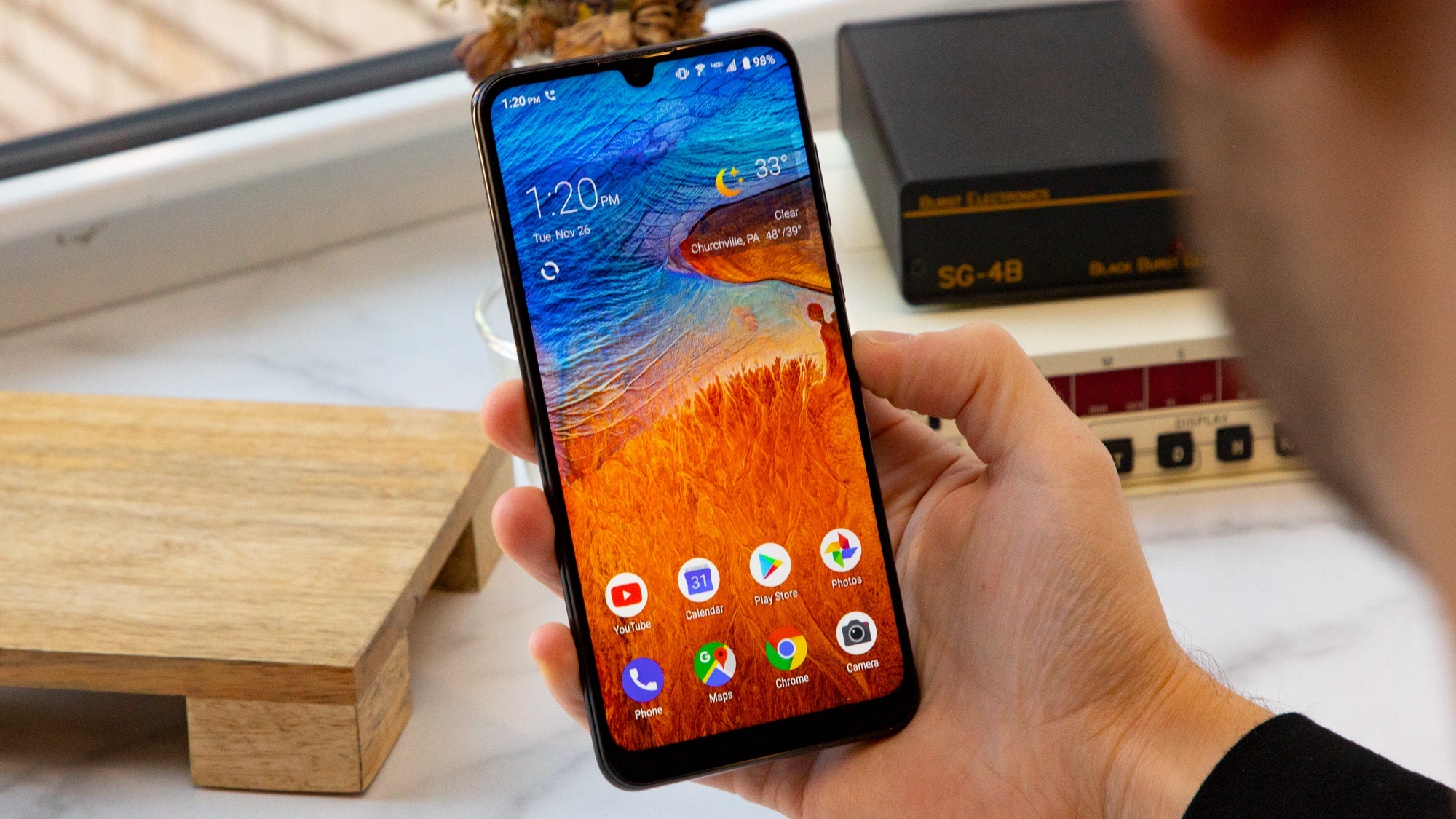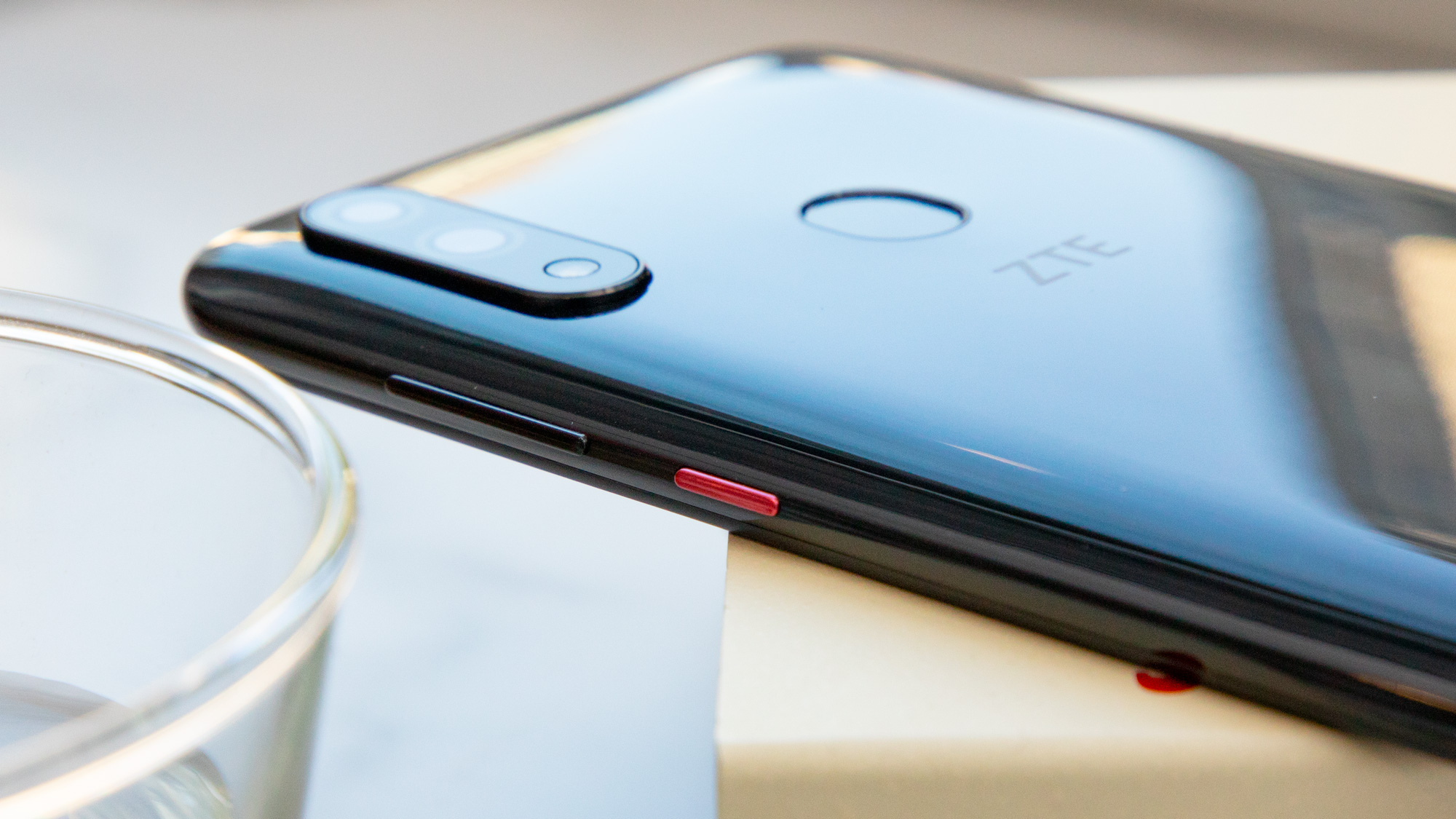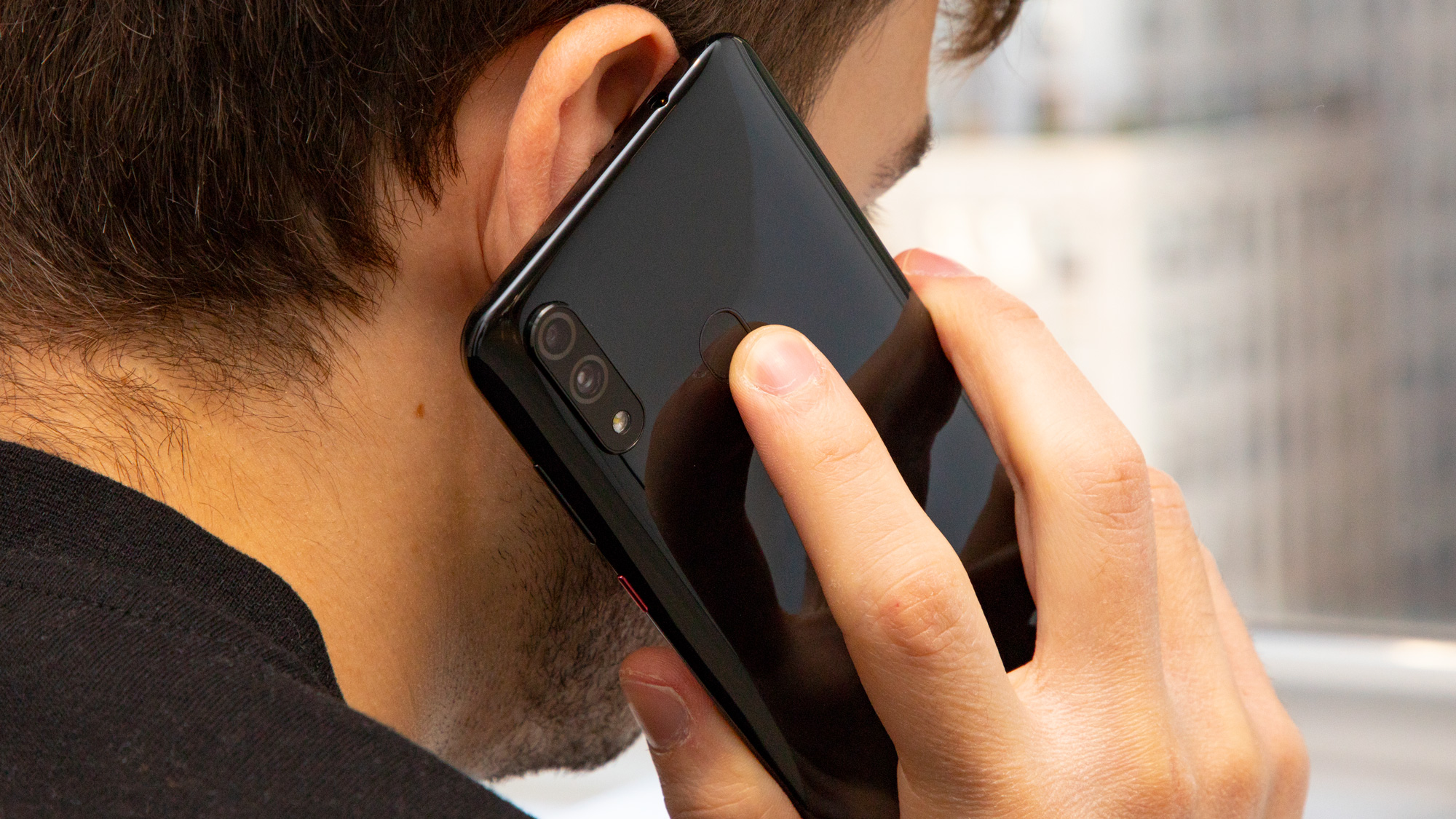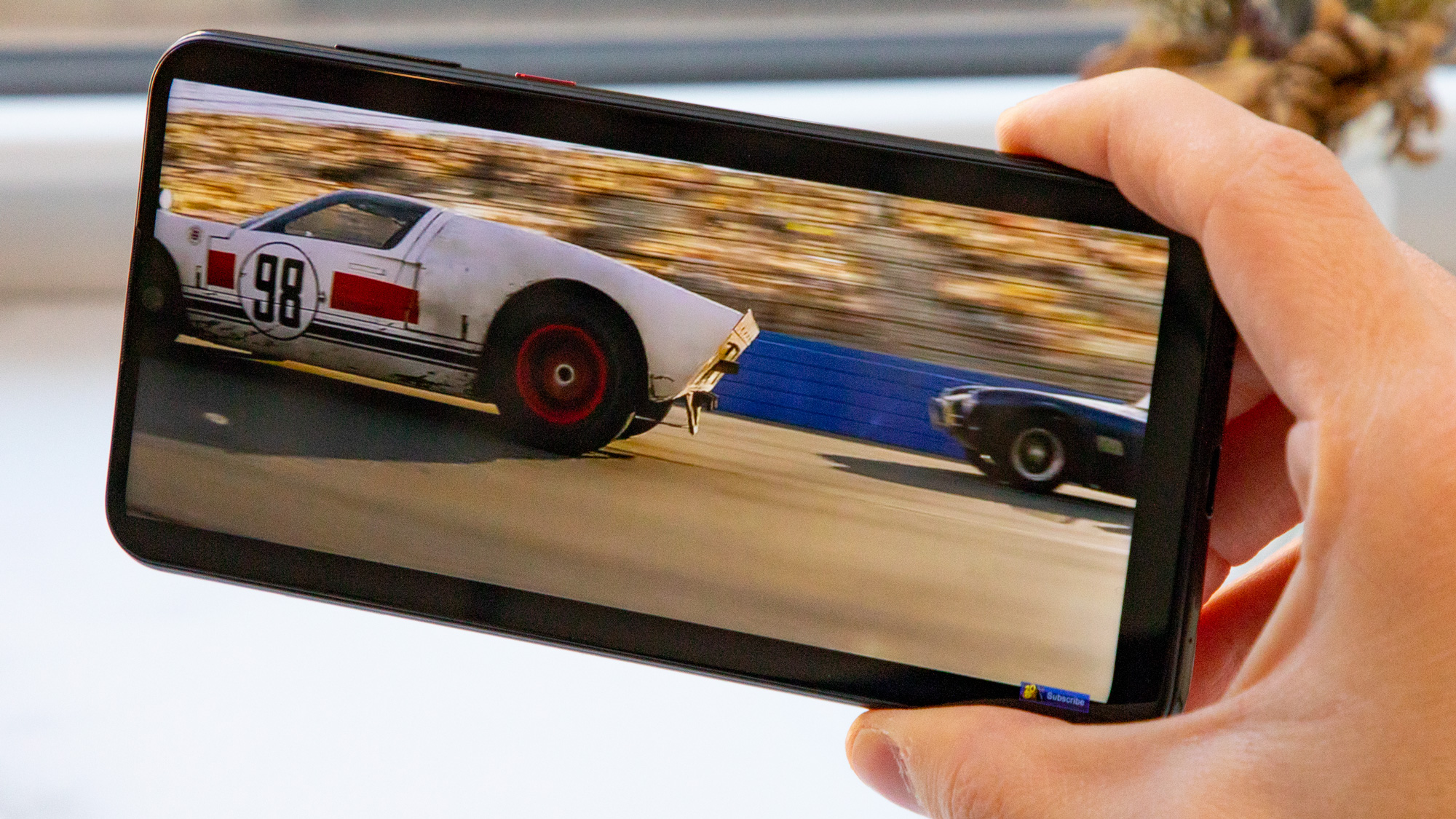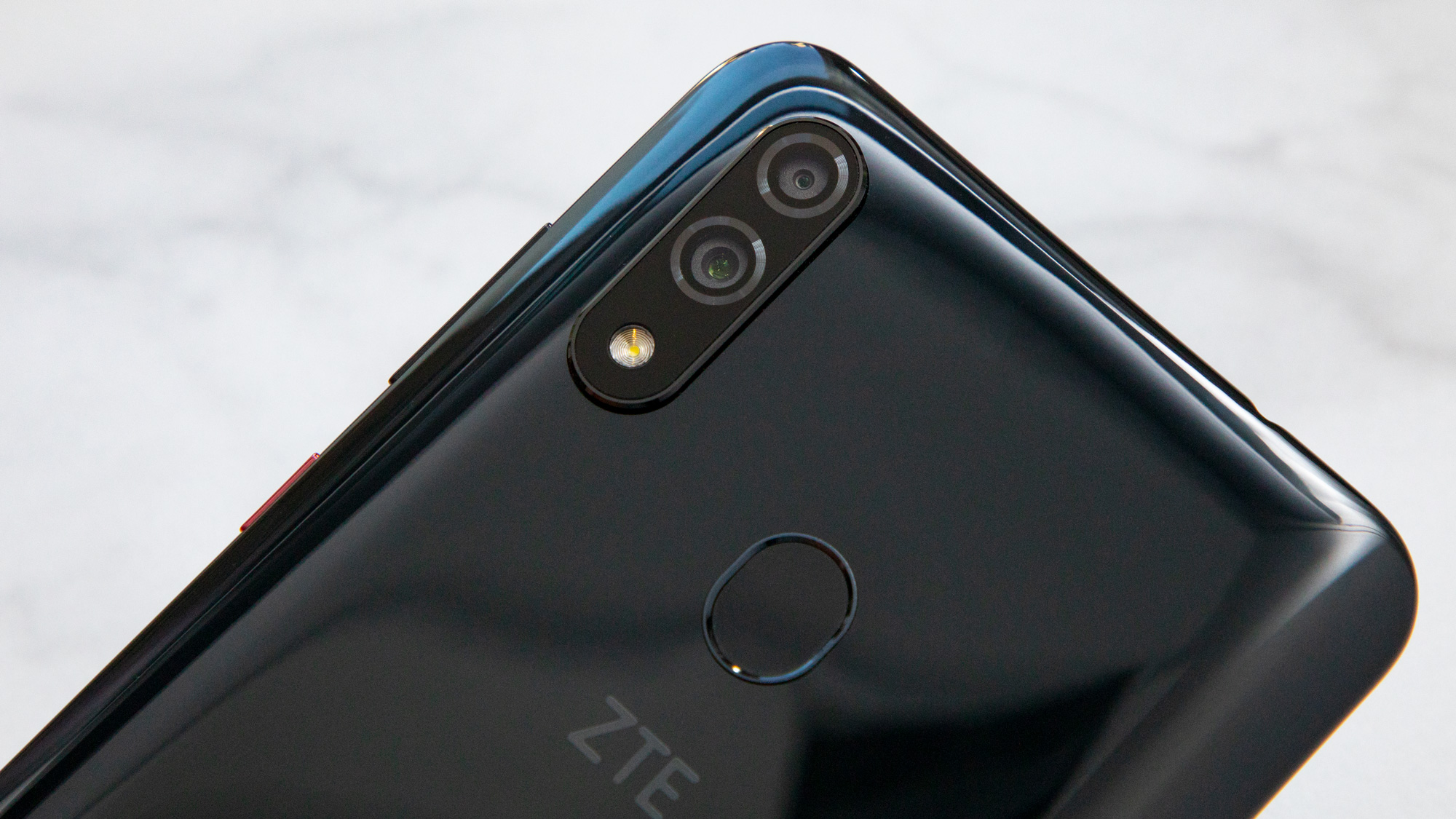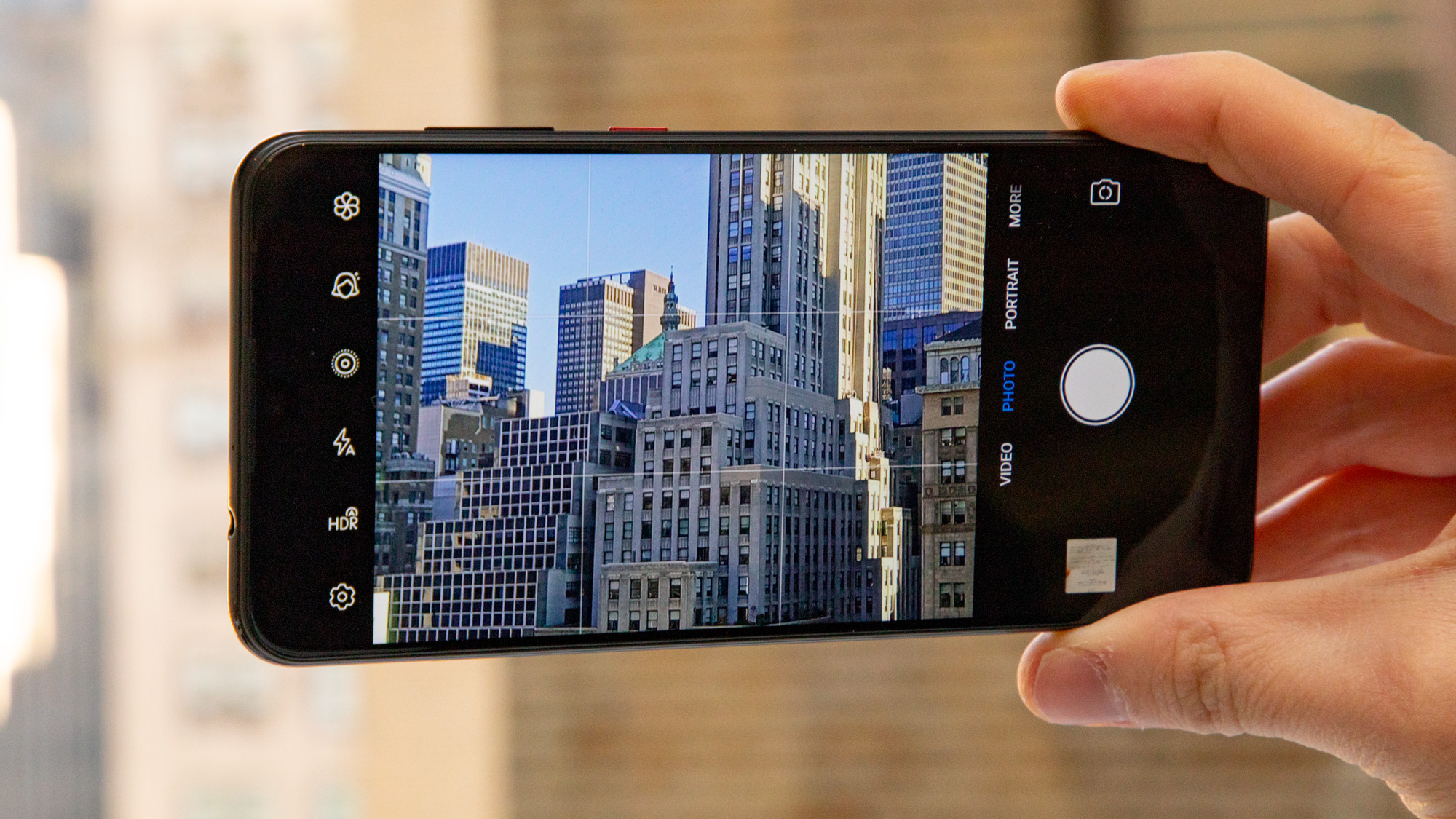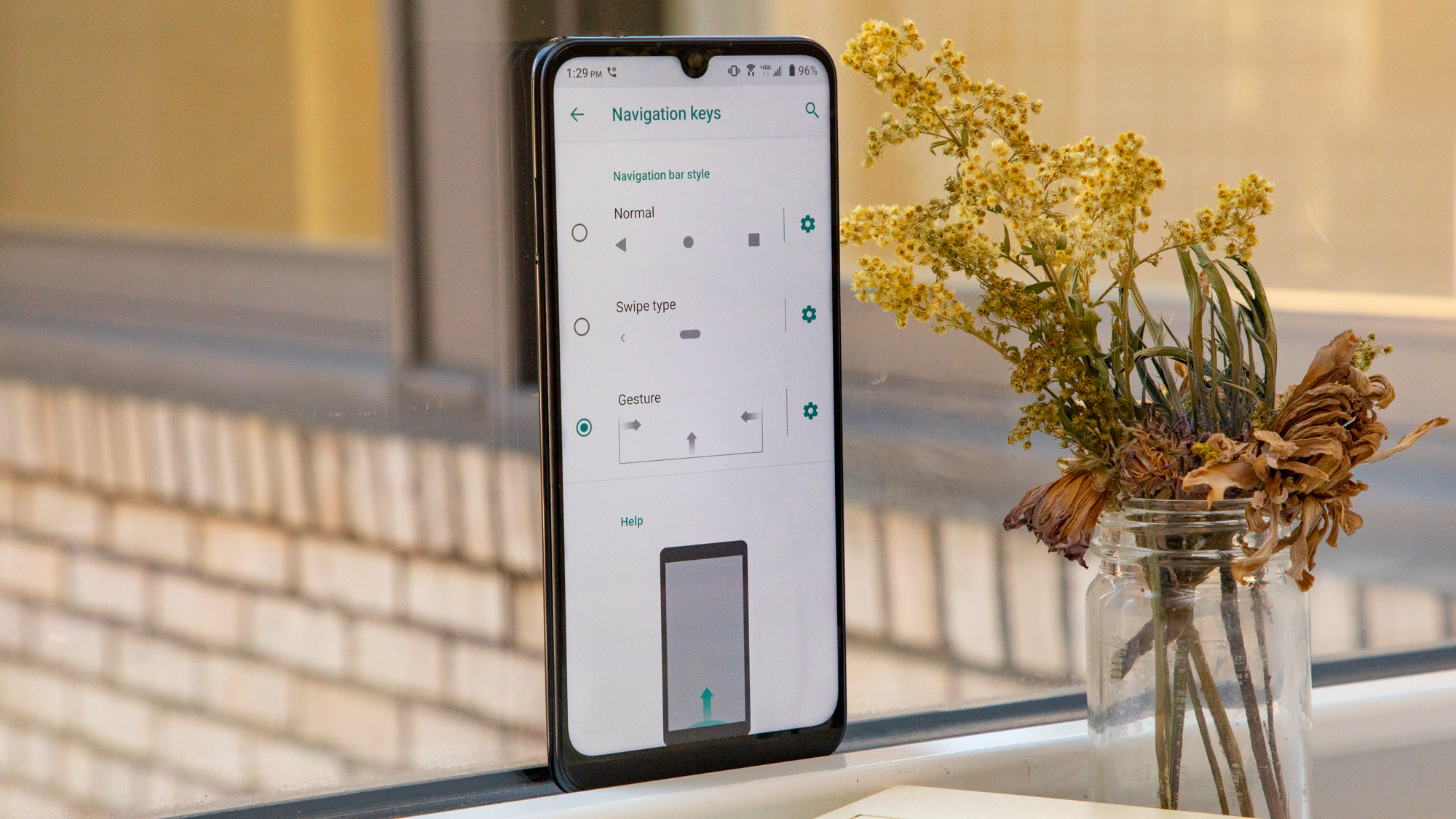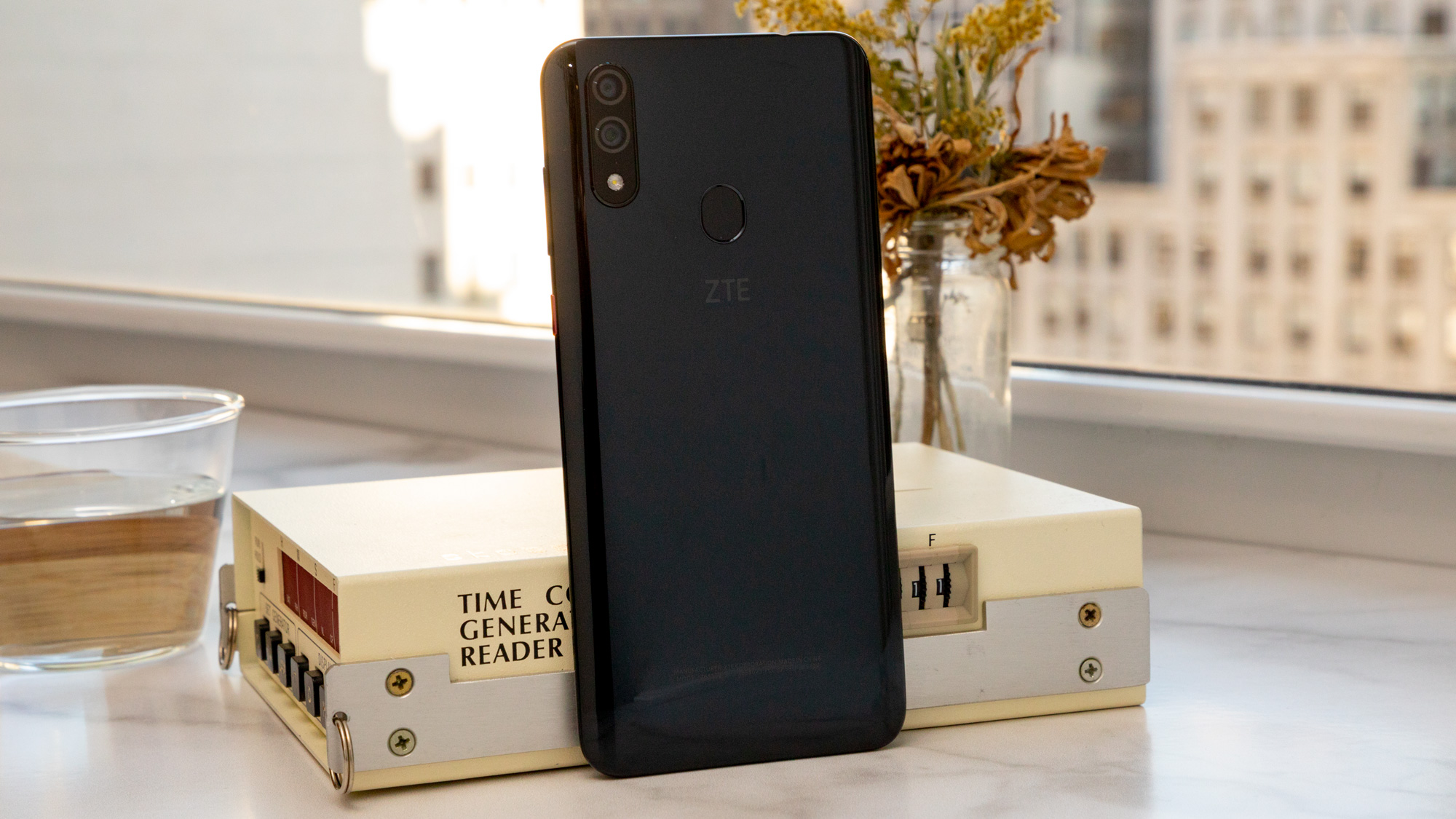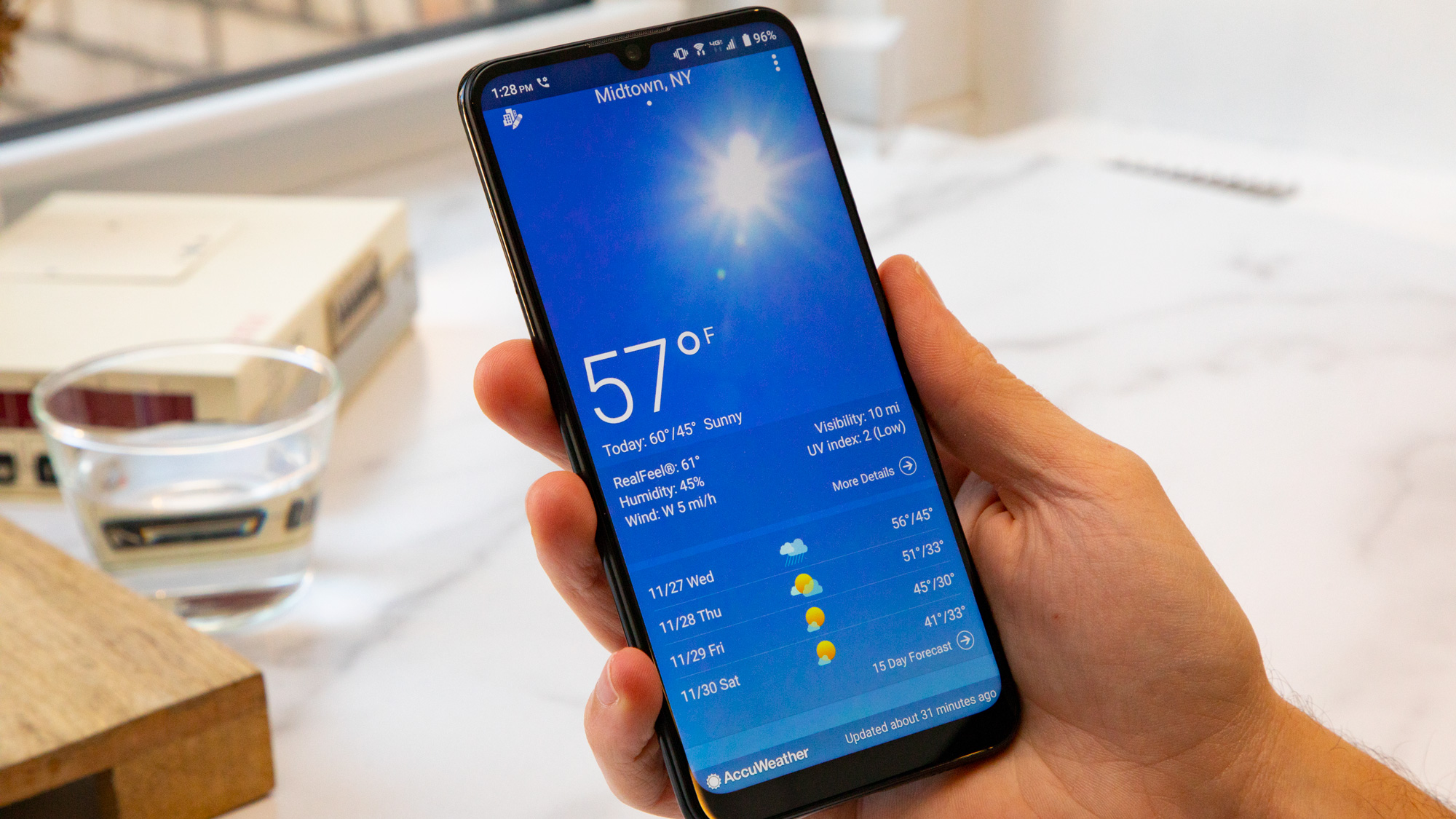Tom's Guide Verdict
If you need a new phone under $200 and you're never far from a charger, the Blade 10 Prime isn't a bad buy. But the Moto G7 Power is a better value, with a battery that lasts twice as long.
Pros
- +
Good performance
- +
Low price
- +
Decent cameras
Cons
- -
Short battery life
- -
Dim display
- -
Camera can be unresponsive
Why you can trust Tom's Guide
These days, $179 can get you a surprising amount of phone. The ZTE Blade 10 Prime is a case in point.
For less than $200, ZTE's newest budget contender offers a dual-lens rear camera, a notched, 6.3-inch display with slender bezels on the top and sides, and a microSD card slot, so you can store in excess of 2TB of photos, apps and more on your device.
On paper, that probably doesn't sound too shabby. But while the Blade 10 Prime performs well for its price, the phone's disappointing battery life, dim display and sluggish cameras keep it from topping our list as one of the best smartphones for those on a strict budget.
ZTE Blade 10 Prime price and availability
The ZTE Blade 10 Prime is sold through Visible, Verizon's prepaid subsidiary. Normally, the phone costs $179, though Visible is currently running a promotion that slashes the price by another $50. While the Blade 10 Prime is technically a Visible exclusive, there's another device, simply called the ZTE Blade 10, that is identical to the Prime variant; you can buy it unlocked for $179 direct from ZTE.
ZTE Blade 10 Prime specs
| Price | $179 |
| Display (resolution) | 6.3-inch LCD (2280 x 1080) |
| Rear cameras | Dual: 16-MP primary, wide (ƒ/1.8); 5-MP secondary (ƒ/2.0) |
| Front camera | 16 MP (ƒ/2.0) |
| CPU | MediaTek Helio P60 |
| RAM | 3GB |
| Storage | 64GB |
| microSD slot? | Yes; up to 2TB |
| Battery | 3,100 mAh |
| Battery life | 7:02 |
| Size | 6.22 x 2.96 x 0.31 inches |
| Weight | 5.76 ounces |
What we like about the ZTE Blade 10 Prime
For a sub-$200 phone, the ZTE Blade 10 Prime has a few things going for it. Buyers should be generally pleased with the phone's performance and build quality, and the cameras take better photos than you'd expect (though the camera app itself could use some tweaks).
Thin and light design
The Blade 10 Prime is a nondescript black slab in the way a lot of budget phones are, though at least it's very thin and light. The phone's curved back makes it easy to hold in your hand, and the ruby-red power button stands out to add a bit of pop to ZTE's otherwise understated aesthetic.
The glossy plastic that ZTE has employed on the Blade 10 Prime isn't the nicest we've seen, though. There's a slight orange peel effect visible under our office lights that instantly torpedoes any impression you might have that this phone has been crafted from glass. Still, that's not particularly unusual in the sub-$200 segment, and everything still feels physically solid.
Get instant access to breaking news, the hottest reviews, great deals and helpful tips.
The fingerprint sensor mounted on the back of the Blade 10 Prime is a little small for my liking; but because it's deeply recessed, it's relatively easy to locate with your index finger. It would have been nice if ZTE could have found a way to shoehorn this scanner into the Blade 10 Prime's bottom bezel, given that there's some empty space under the screen on the front of the device.
You'll notice a 3.5-millimeter headphone jack hiding in the top edge, which is a bit of an awkward place for a headphone jack to be; with how tall this phone is, it'd be more natural to stash that jack on the bottom. Instead, that's where you'll find the Blade 10 Prime's lone speaker, as the earpiece above the front-facing camera is used for calls only, not media.
Strong performance for a budget phone
ZTE has turned to MediaTek's Helio P60 system-on-chip to power the Blade 10 Prime. In tandem with 3GB of RAM, this processor mostly keeps things humming along quite smoothly, save for really demanding games.
In fact, when compared with one of our favorite budget handsets, the $249 Moto G7 Power, ZTE's phone came out noticeably ahead in two of the critical benchmarks we test. In Geekbench 5, which measures overall system performance, the Blade 10 Prime delivered 1,427 points, compared with the G7 Power's 1,139. Similarly, the Blade 10 Prime eclipsed the G7 Power's 3DMark Ice Storm Unlimited test by a score of 18,900 to 14,802.
Those numbers translate to generally responsive real-world performance when switching apps, browsing Google Maps, surfing the web and scrolling through social media. (Taking photos is another story, but we'll get to that in a minute.) Avid mobile gamers will be pleased to know the Blade 10 Prime can at least run PUBG Mobile at a serviceable frame rate when tuned to low-fidelity graphics, though the experience obviously isn't as buttery smooth or striking as you'll find on the most powerful handsets.
Respectable cameras (but frustrating to use)
Phones with dual cameras are common these days, though multiple lenses are rare to find under the $200 mark. In that sense, the Blade 10 Prime — with its primary 16-megapixel, ƒ/1.8 lens and secondary 5-MP, ƒ/2.0 lens — separates itself from the budget crowd. Those optics are accompanied by another 16-MP shooter on the front, which is pretty high resolution for a selfie camera on such an inexpensive phone.
Let's start with that main rear camera, though. The Blade 10 Prime can capture surprisingly sharp images through that 16-MP lens, especially when compared with the Moto G7 Power's best efforts. Even outside on a rain-soaked night in New York City, ZTE's device pulled in far more detail, with the edges of buildings, cars and passersby more clearly defined. You can even see the rain beading up in the grooves of the asphalt — a texture that is totally lost through the 12-MP lens of Motorola's phone. The Blade's rendition is far from perfect, especially where colors and highlights are concerned, but it's much better than you'd think, given the price range we're dealing with.
Indoors, ZTE's device also emerged as superior when I took a photo of a mask hanging on a wall, lit by a mix of natural and artificial light. While I personally prefer the G7 Power's ability to color in the shadows, everything from the glimmer of light reflecting off the paint on the mask's eye, to the splatters on the horns, is so much crisper on the Blade 10 Prime that the lighting deficit almost doesn't matter.
It helps that ZTE has chosen to also employ a 16-MP sensor for selfies. You don't have to look hard to see the Blade's advantage here — it's working with twice the resolution of Motorola's device, and it shows. Where I come out faded and glassy-eyed on the G7 Power, my face is brighter, more colorful and in focus on the ZTE handset.
The 5-MP secondary lens on the back of the Blade 10 Prime is supposedly there to enable bokeh effects. I say "supposedly," because, while I was moderately impressed with the sharpness, white balance and overall quality of the photo I took of my colleague Kate, the phone repeatedly failed to apply the background blur, no matter whether I used the portrait or bokeh mode.
Honestly, it isn't a huge loss; cheap phone cameras never handle bokeh well. Still, it indicates a more serious issue on the software side, even though the Blade 10 Prime's image quality actually happens to be solid overall. ZTE's cameras can be remarkably slow at times, too, and while it's true that most cheap phones have to take a breather in between snapping pictures, the pauses on this device are noticeably longer than those on the G7 Power: As the last photo processes in the background, it's not unusual to experience a slight hitch in the viewfinder after each and every shot you take.
Even though the Blade 10 Prime relies upon Google Photos for browsing images after you've taken them, viewing just-snapped photos in the Camera app can be remarkably laggy as well, as swiping animations play back at a snail's pace. This isn't as consistent a problem as the shutter lag, but it did happen on multiple occasions in my experience with ZTE's phone.
What we don't like
Besides the pokey camera performance, we found a few other areas where the Blade 10 Prime fell short of our expectations — especially when it came to longevity on a charge.
Disappointing battery life
You expect to sacrifice power, camera quality and design with cheap smartphones, but the one thing you shouldn't have to give up is battery life.
Apparently, ZTE never got that memo, because the Blade 10 Prime put up disappointing numbers in Tom's Guide's custom battery test, eking out just 7 hours and 2 minutes from its 3,100-mAh battery.
To put that into stark perspective, that's less than half the endurance of the Moto G7 Power, which turned in a staggering 15 hours and 35 minutes of web surfing on 4G LTE and currently sits atop the list of the longest-lasting smartphones we've ever tested.
In working on this review, I charged up both the Blade and G7 Power before one weekend, and then proceeded to use them intermittently over the next couple days. By Monday, Motorola's phone was still sitting pretty at about 65%; ZTE's phone, on the other hand, was about to kick the bucket at 10%.
Even the $189 Nokia 4.2, which packs a battery that's slightly smaller than the Blade 10 Prime's, at 3,000 mAh, beat ZTE's underwhelming result by 2 hours and 10 minutes. The Nokia's longevity still isn't excellent, though it's much closer to the average smartphone. Seven hours on a charge from the Blade 10 Prime is just not good enough, especially given the sacrifices buyers already make with a handset this cheap.
A solid display that's far too dim
In the grand scheme of things, the Blade 10 Prime's 6.3-inch LCD display is passable. The full-HD resolution suffices, and the 122.4% coverage of the sRGB color space and Delta-E score of 0.28 indicate the colors are where they need to be, too.
In fact, the screen on ZTE's phone puts the Nokia 4.2's to shame, as that 5.7-inch, 720p device couldn't even crack 98% in the color gamut test. What's more, with a color accuracy score of 0.35 (numbers closer to zero are better), the Nokia 4.2 delivered unrealistically washed-out hues, too.
However, the Blade 10 Prime underperforms when it comes to brightness. This panel peaks at a measly 368 nits, which is not especially impressive. In contrast, the G7 Power topped out at 558 nits, ensuring comfortable outdoor viewing on a sunny day. The Blade 10 Prime's screen often looks dim indoors by comparison, and that's never a good sign.
That's a shame, because on those rare occasions where the Blade 10 Prime's screen is bright enough to satisfy ambient conditions, it doesn't look half bad. Watching a trailer for Ford v Ferrari, I could make out every driver up and down the iconic start/finish straight at the Circuit de la Sarthe, walking to take their places across from their cars at the start of the 1966 24 Hours of Le Mans. Having viewed the very same scene in a theater, I was impressed with the fidelity on ZTE's phone.
Yet that still doesn't make up for the fact that during most of my time with the Blade 10 Prime — including when I watched that trailer — I needed to crank the display's brightness to the max. And if it had been possible for me to set it even higher, I would have.
Bottom line
If you're determined to pay less than $200 for a new smartphone, you're going to have to make some compromises. The ZTE Blade 10 Prime is a reminder of that. For everything ZTE's phone gets right — the respectable performance and solid image quality, first and foremost — it gets hung up in other areas, like with its short battery life and a display that's so dim, it can be hard to see outdoors.
However, the Blade 10 Prime is not a bad phone, and for less than $200, you could do worse. The unlocked version of the Visible-exclusive Prime model, the Blade 10, is a solid option for people looking for a cheap, no-contract device with a big screen to take with them to a discount carrier.
For my money, I'd spend a little more and nab a Moto G7 Power, to have a battery that lasts twice as long on a charge. The Blade 10 Prime might be slightly more affordable, but that won't mean much once it dies halfway through the workday.
Adam Ismail is a staff writer at Jalopnik and previously worked on Tom's Guide covering smartphones, car tech and gaming. His love for all things mobile began with the original Motorola Droid; since then he’s owned a variety of Android and iOS-powered handsets, refusing to stay loyal to one platform. His work has also appeared on Digital Trends and GTPlanet. When he’s not fiddling with the latest devices, he’s at an indie pop show, recording a podcast or playing Sega Dreamcast.
